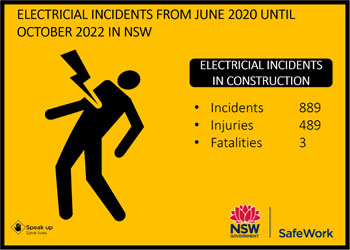
If you are a business or employer (or other PCBU) you must make sure that electrical equipment is regularly inspected and tested by a competent person if the electrical equipment:

A competent person is someone who has acquired — through training, qualification or experience — the knowledge and skills to carry out inspections and testing of electrical equipment.
The relevant Australian standards are:
The frequency of inspection and testing will vary depending on the nature of the workplace and the risks associated with the electrical equipment. The AS/NZS 3760 In service safety inspection and testing of electrical equipment and RCDs, outlines inspection, testing, tagging methods and frequency.
Details of the required frequency for inspection and testing on construction sites are set out in Australian standard AS/NZS 3012 Electrical installations — Construction and demolition sites.
A record of testing must be kept until the electrical equipment is next tested, permanently removed from the workplace or disposed of. A record of testing must specify:
The record may be in the form of a tag attached to the electrical equipment tested.
The managing electrical risks in the workplace code of practice (PDF, 1337.36 KB) provides more information on inspection and testing of electrical equipment.
The electrical safety in construction inspection checklist (PDF, 196.38 KB) has been developed for principal contractors and site supervisors to assist in complying with electrical requirements when onsite.